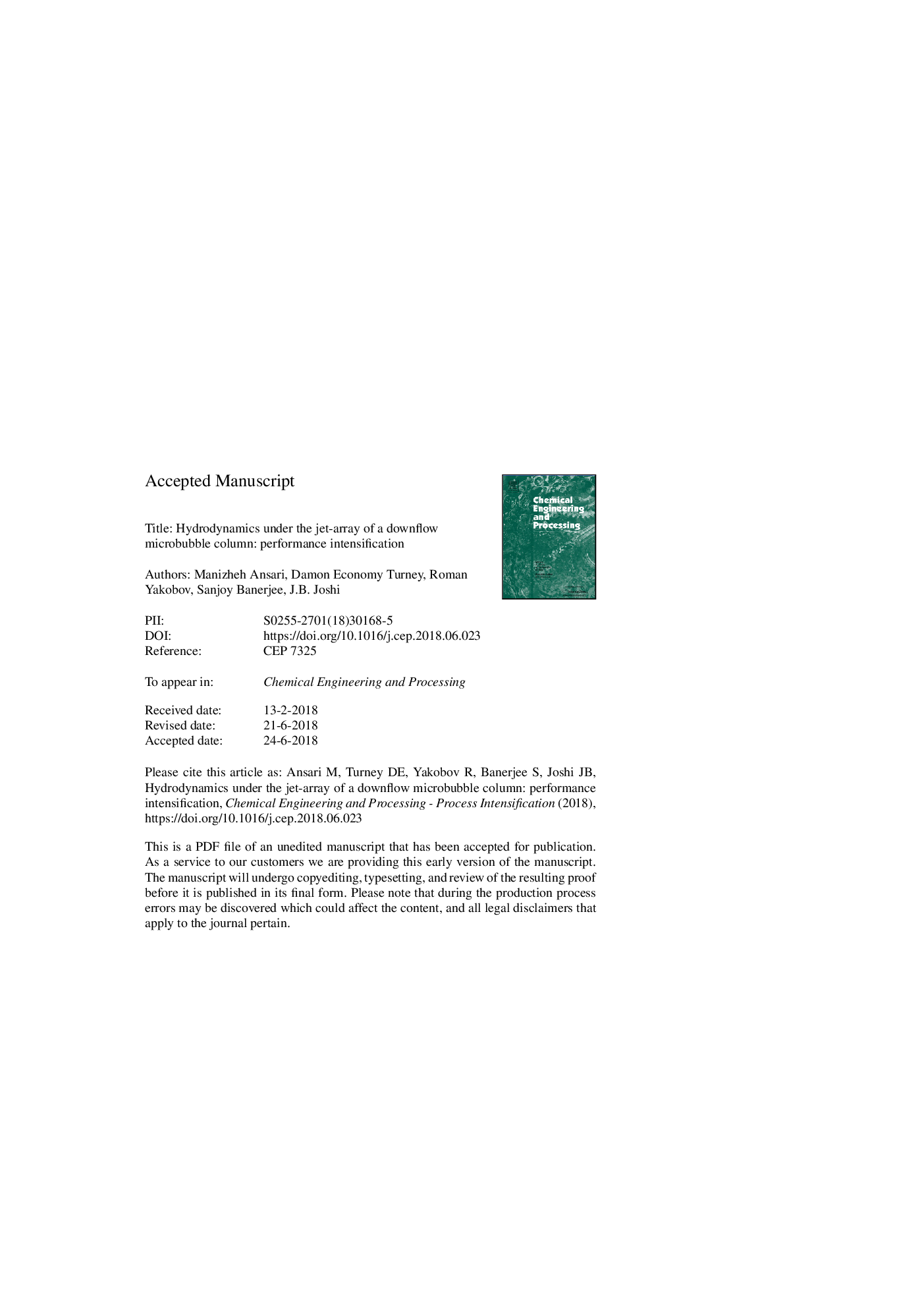| Article ID | Journal | Published Year | Pages | File Type |
|---|---|---|---|---|
| 7088536 | Chemical Engineering and Processing: Process Intensification | 2018 | 23 Pages |
Abstract
Development of low-cost, ambient pressure, gas-liquid contactors with fast mass transfer (high kLa) and low energy consumption are key for industrial chemical processing technologies. A recently published reactor design comprised an array of downward-pointing micro-jets at the top of the vessel to create a downflow of microbubbles. Performance showed high kLa and low power usage. However, the most stable hydrodynamic mode under a jet array includes a large and persistent eddy, likely similar to the “Coanda effect” reported much earlier. Here we test swirling hydrodynamics to prevent momentum positive feedback that hypothetically creates this backmixing. Particle imaging velocimetry (PIV), salt-pulse tracking residence time distribution (RTD), and kLa data are collected from the swirl and non-swirl case. The data confirm the hypothesis about the hydrodynamic origin of the eddy, and suggests that it must be considered during reactor design. The data further show that swirl shifts the overall reactor hydrodynamics closer to plug flow, creates more tanks in series, more homogenous turbulence, greater kLa, and greater kLa per power usage (an increase by 40%). A physical understanding is given by measurements of residence time distribution that create more efficient contact of gas and liquid phases.
Related Topics
Physical Sciences and Engineering
Chemical Engineering
Process Chemistry and Technology
Authors
Manizheh Ansari, Damon Economy Turney, Roman Yakobov, Sanjoy Banerjee, Jyeshtharaj Bhalchandra Joshi,
